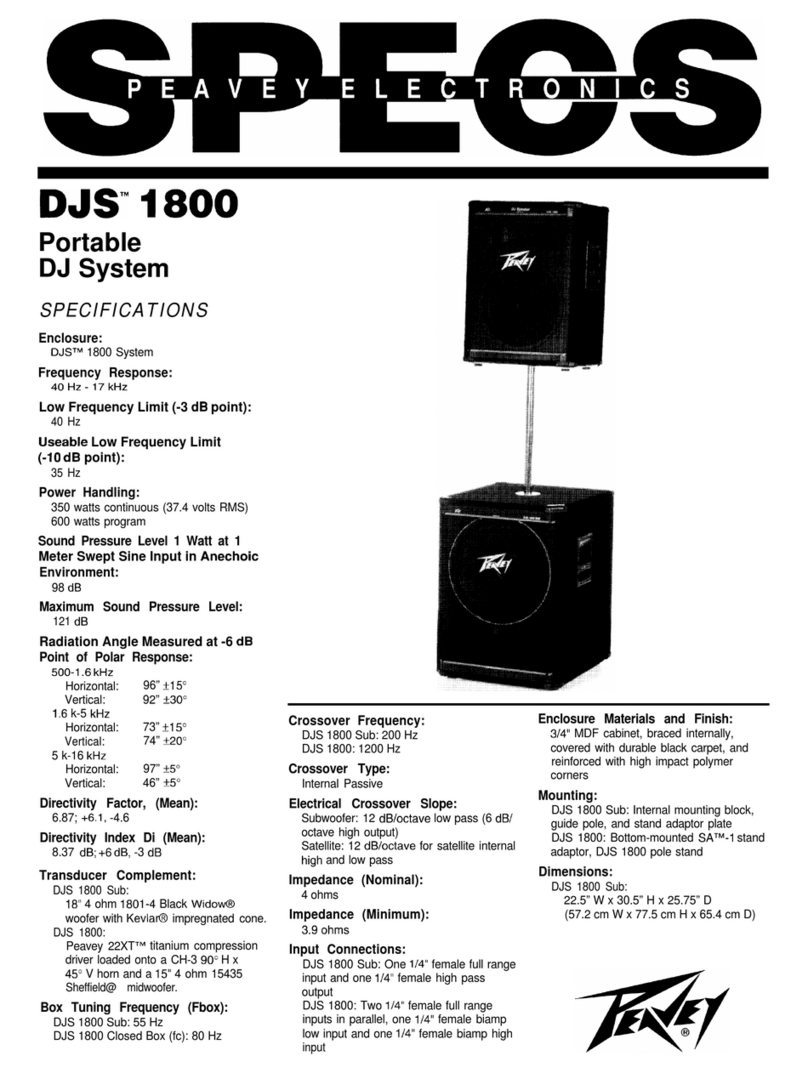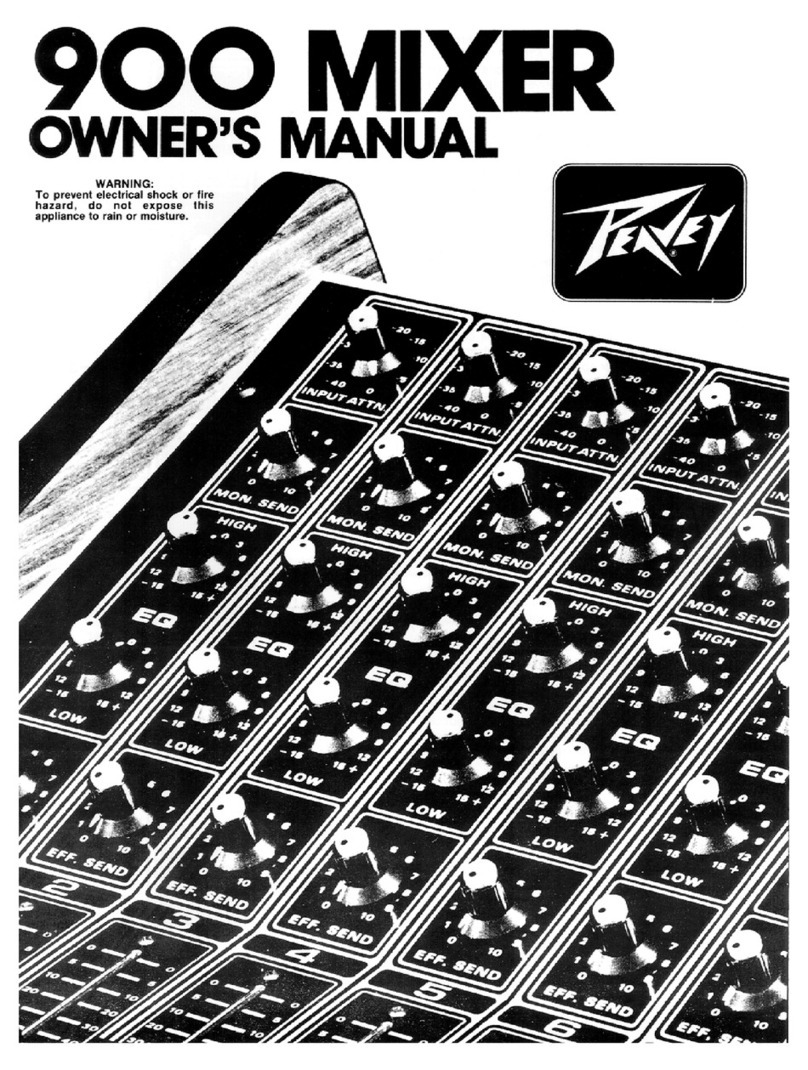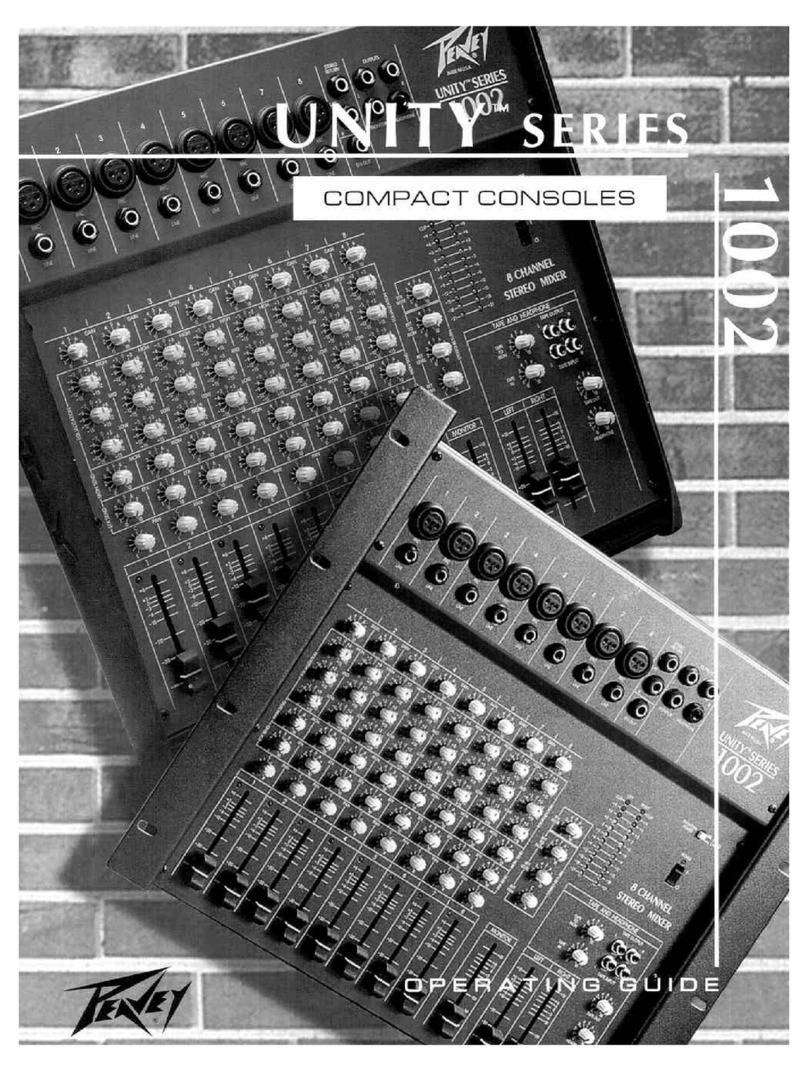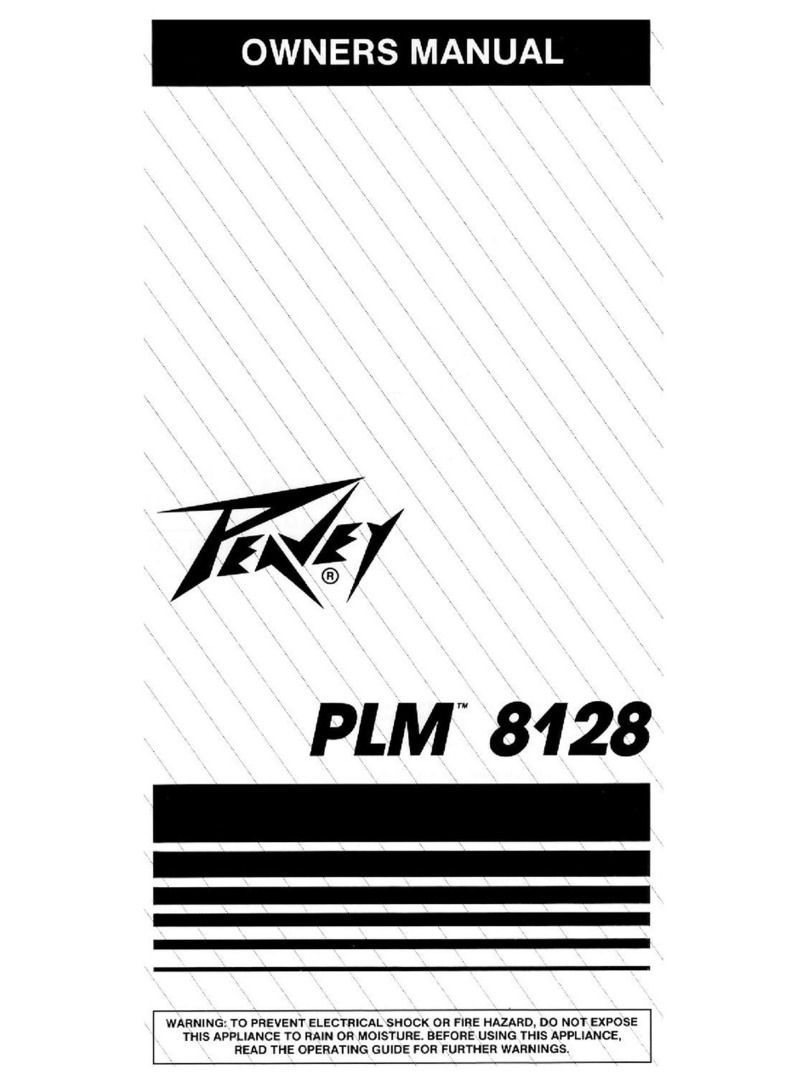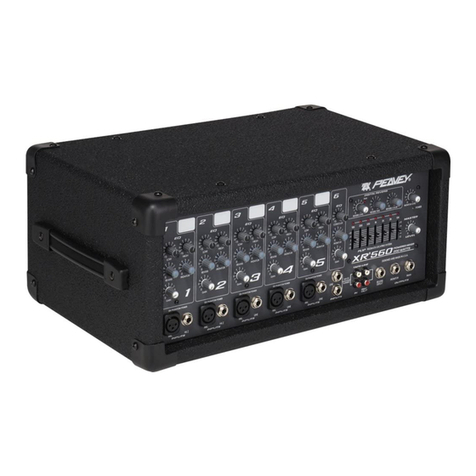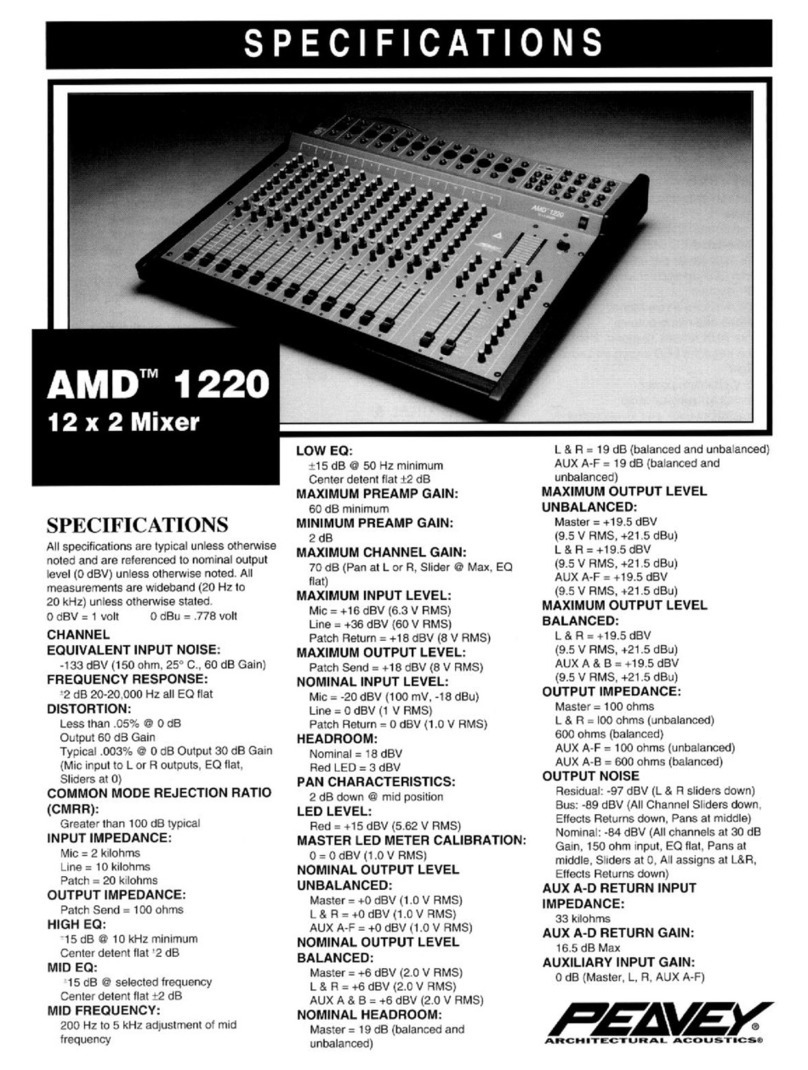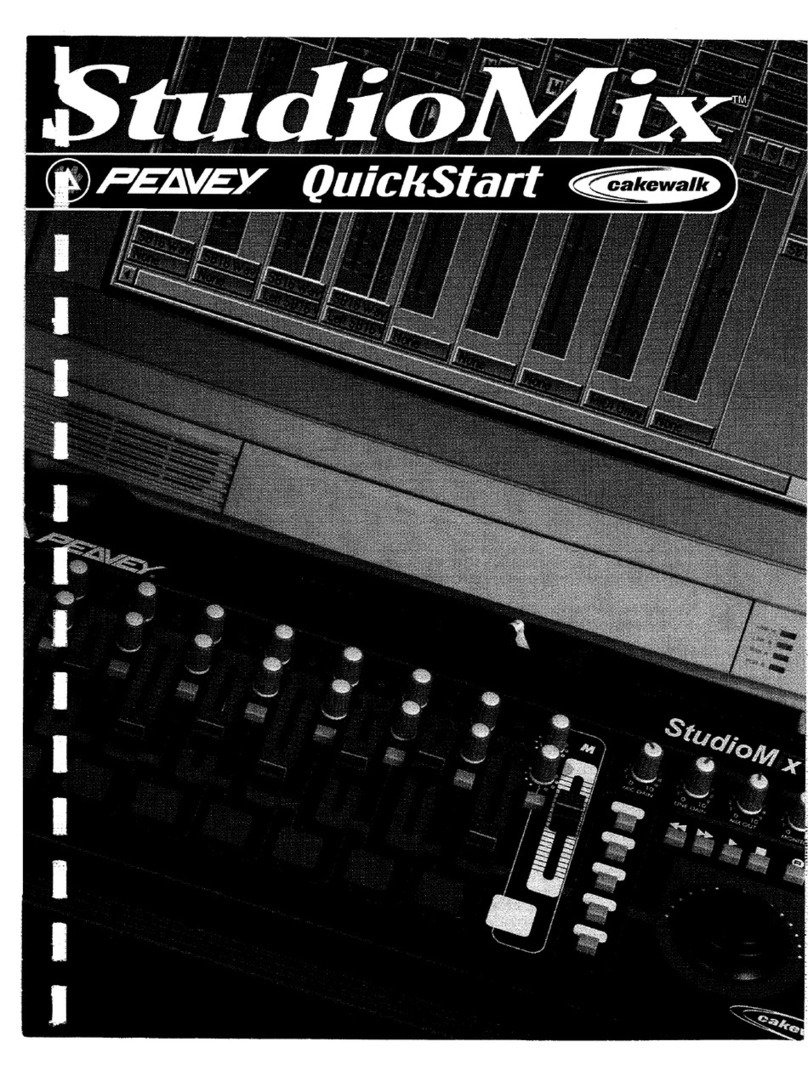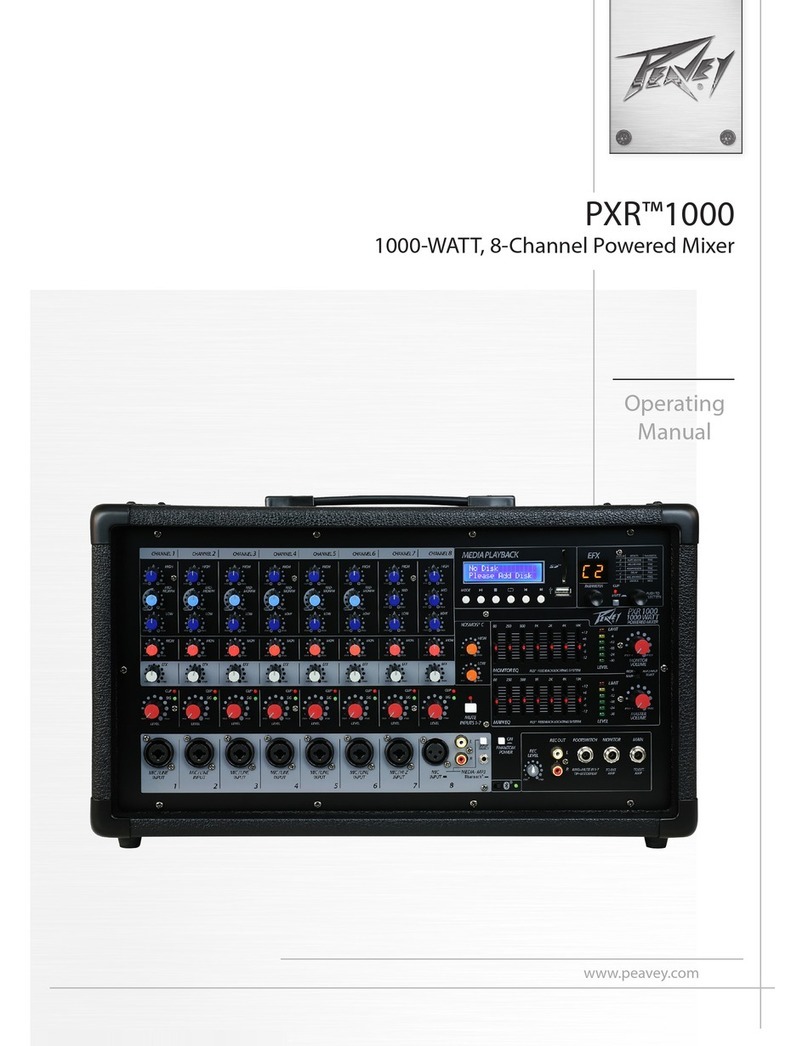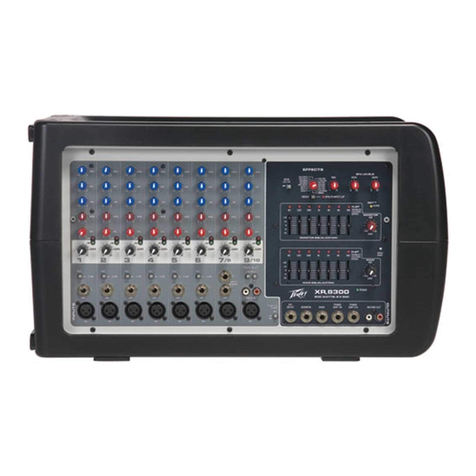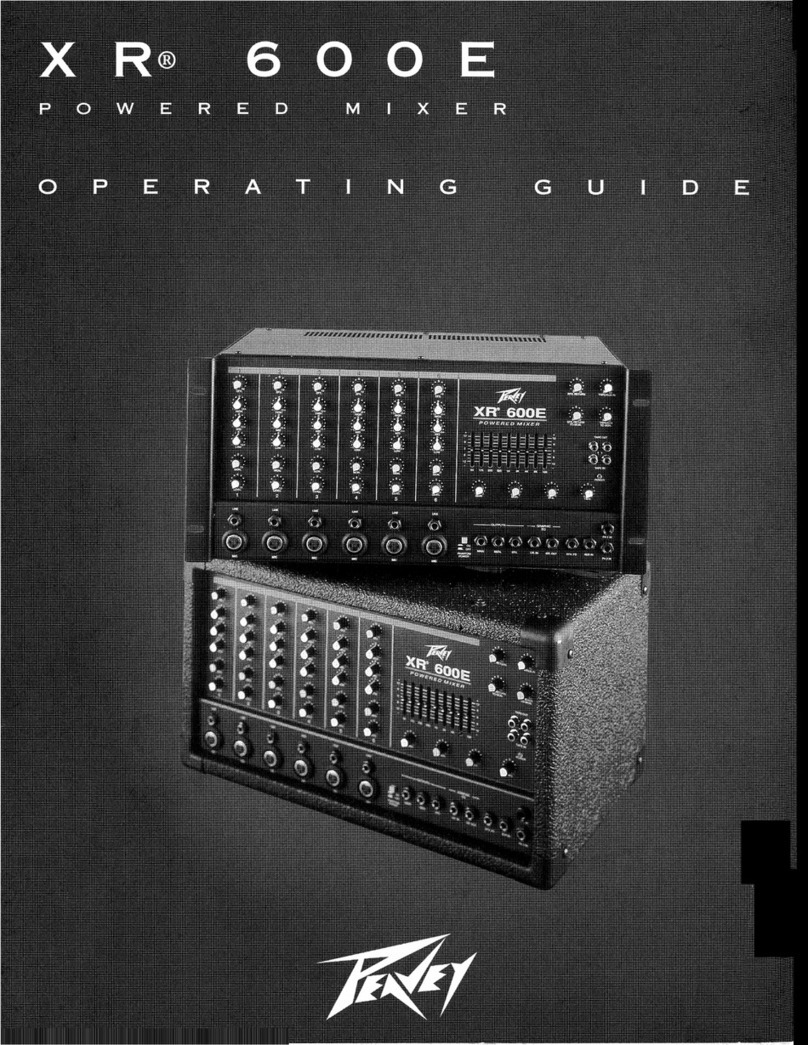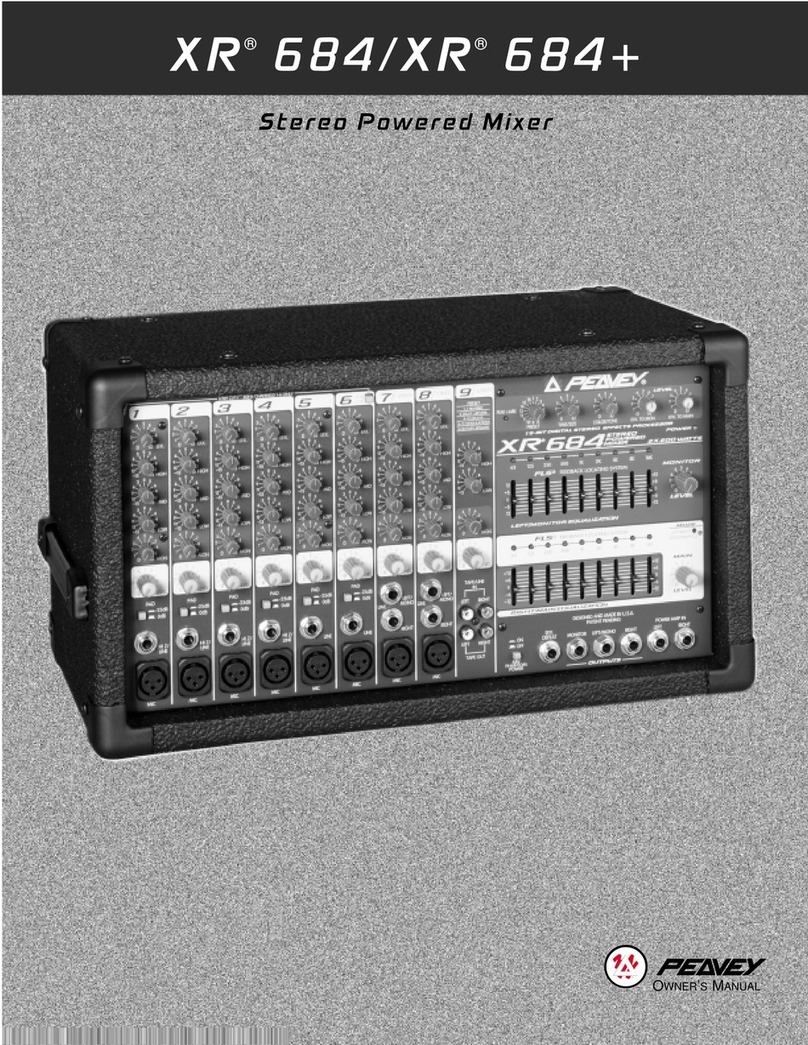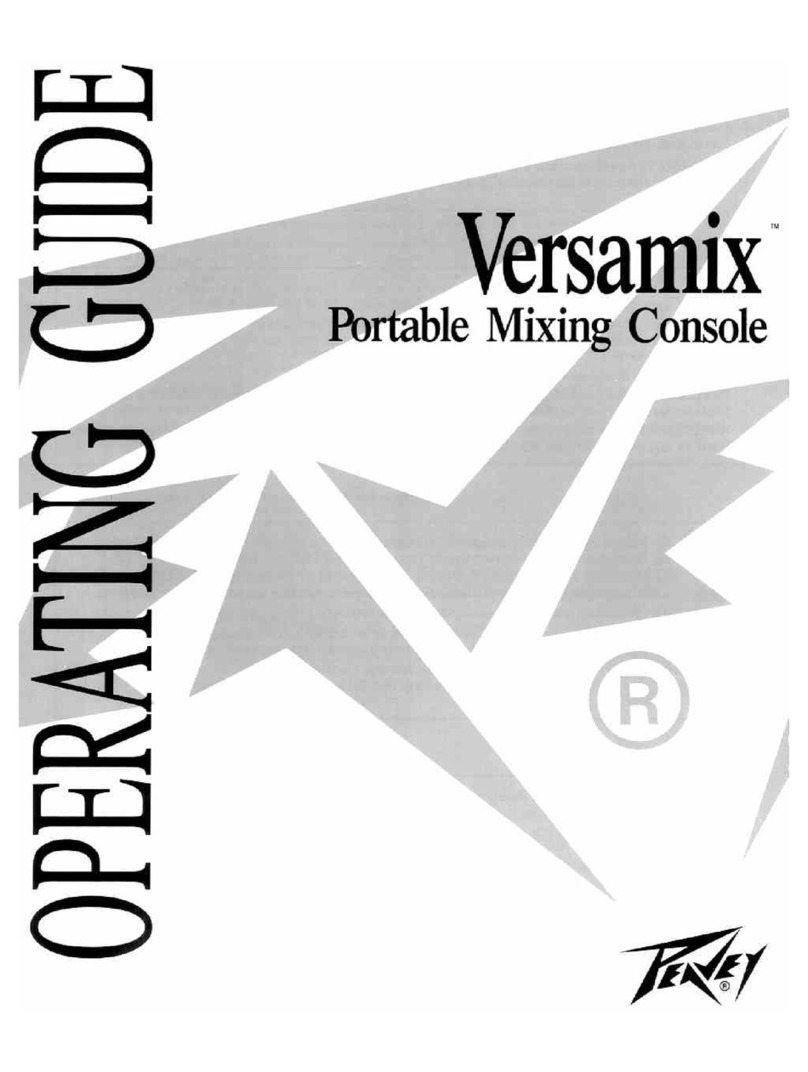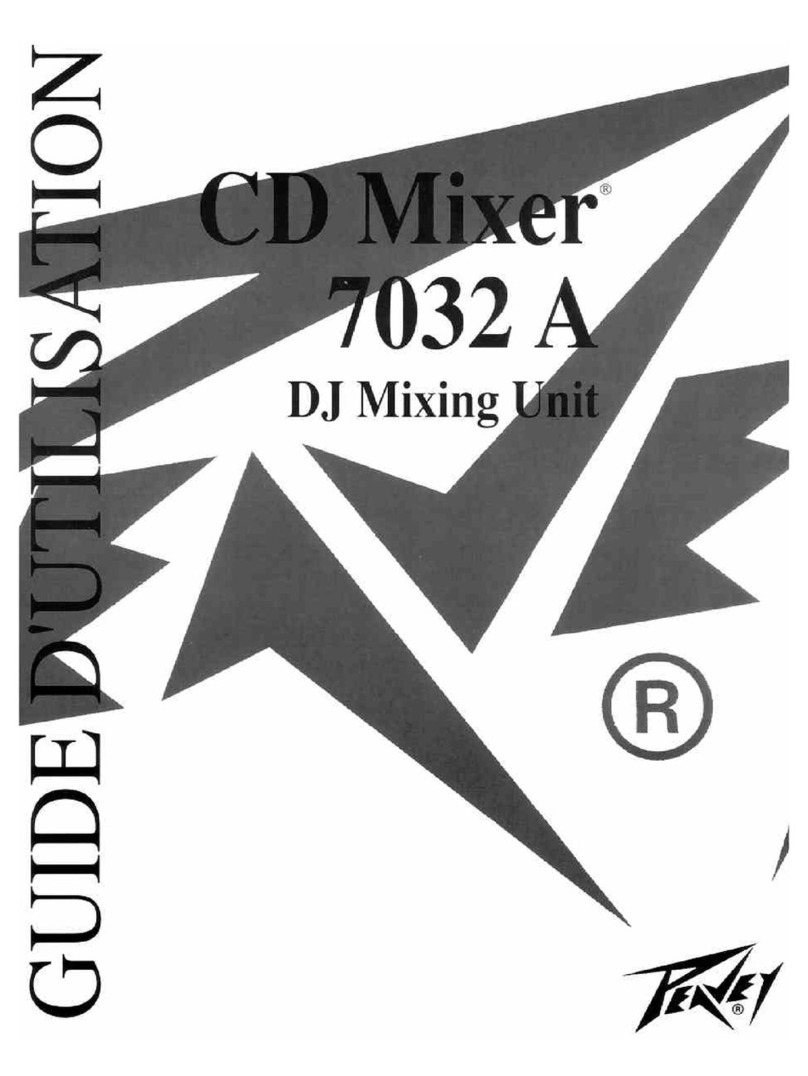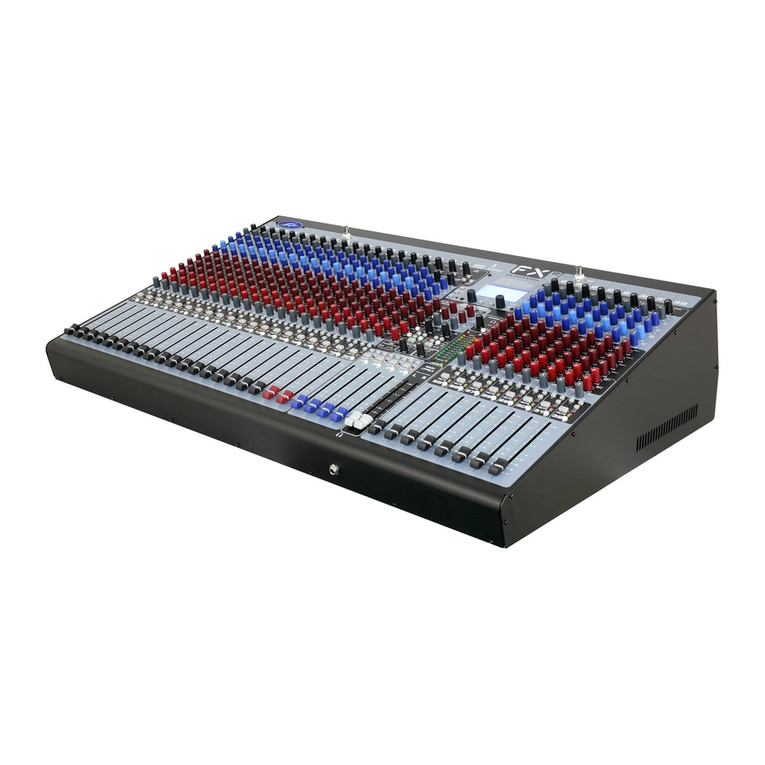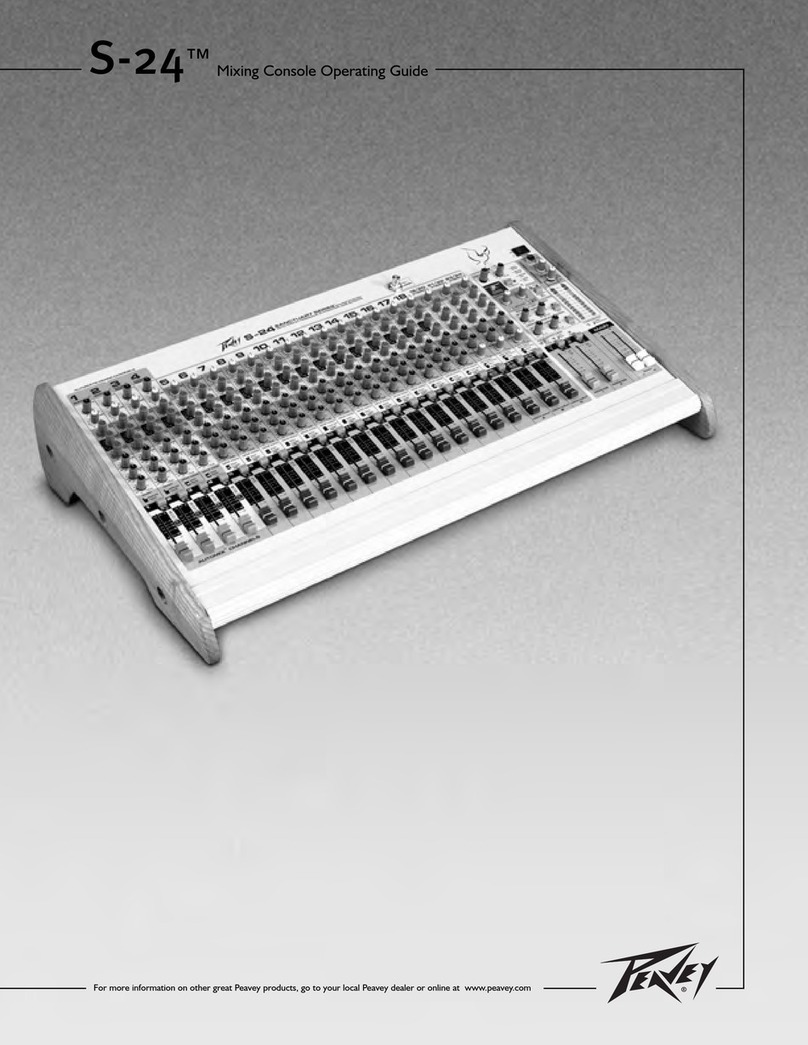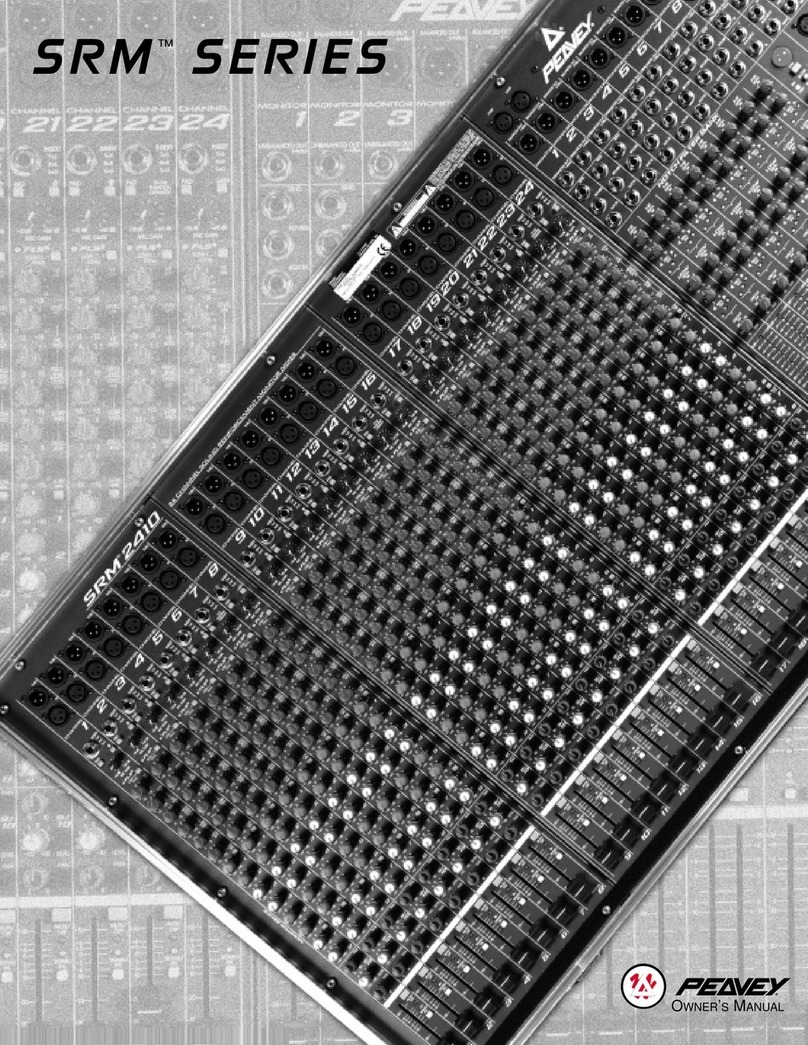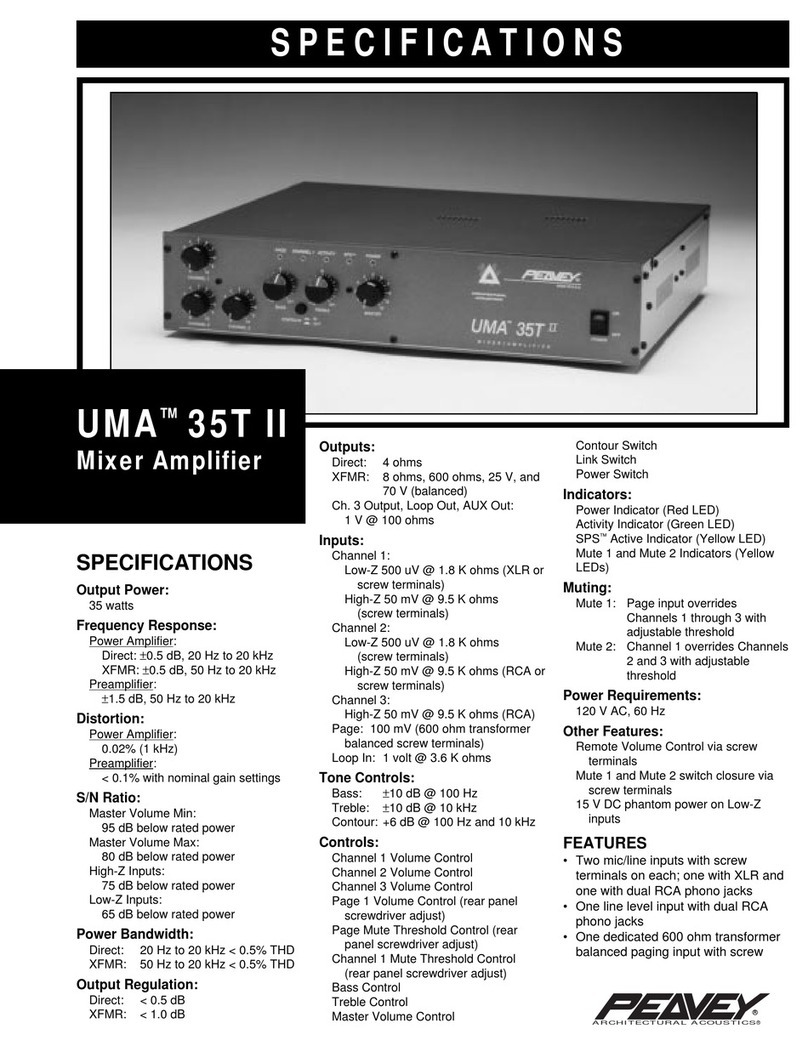• Master level controls for each
output bus
• Three five-segment LED meter
arrays
• Four-band EQ: lo ‚ lo -mid‚
high-mid‚ high
• Integral channel muting system
ith priority
• Audio and mute bus linking
• Left‚ Right‚ Aux and Mute bus
links for stacking multiple units
• Rear panel master/slave linking
mode s itch
• Remote master Left/Right level
control port
• Rear panel 20 dB pad s itch on
each microphone input
• Front panel continuously variable
preamp gain control
• Rear panel bus assign s itches
for each microphone channel
• Rear panel global 100 Hz lo -cut
filter s itch for all microphone
inputs
• Mute bus ith channel 1 rear
panel threshold control
• Select s itch for routing
microphone mix bus post
remote control
• All audio I/O on removable Euro-
type connectors
AARRCCHHIITTEECCTTUURRAALL AANNDD
EENNGGIINNEEEERRIINNGG SSPPEECCIIFFIICCAATTIIOONNSS
The mixer shall have six
electronically balanced microphone
or line inputs. The mixer shall also
have t o stereo unbalanced line
inputs. All inputs shall be routable to
any or all of three master buses, Left,
Right, and Aux. Each microphone
input shall include selectable 48-Volt
phantom po er. Channel One shall
have a variable mute threshold over
all other channels. Each input shall
have a Signal/Clip indicator that
activates green at –20 dB, and turns
red at 2 dB belo clipping. The mixer
shall have three electronically
balanced outputs, Left, Right and
Aux, each ith its o n master output
control and five LED meter array. The
mixer shall have remote master
capability for each of the master L, R
buses. There shall be remote select
for the t o stereo inputs, rear panel
global 100 Hz lo cut filter for the
mic inputs, master/slave link mode
s itch, and audio bus linking. The
mixer shall have a shelving lo EQ
ith 15 dB boost or cut starting at
70 Hz, a peak/dip lo mid EQ ith
15 dB boost or cut at 250 Hz, a
peak/dip high mid EQ ith 15 dB
boost or cut at 3.1 kHz and a high
shelving eq ith 15 dB boost or cut
at 10 kHz. The unit shall be housed in
a rugged metal chassis 1.75" tall by
19" ide by 8.75" deep. One-inch
mounting flanges ill be provided on
each side. The unit shall operate
from 120 VAC, 60 Hz po er. The
mixer shall be capable of driving
+21 dBu into a balanced load from
the Left, Right or Aux outputs, from
20 Hz to 20 kHz. +0 to –2 dB into
600 Ohms ith less than 0.05%
distortion and ith system hum and
noise at least 80 dB belo rated
output. The unit shall be a Peavey
Architectural Acoustics model SMR
821a.
SMR™821a stereo mic/line program audio mixerSpecifications
0 dBu = 0.775 VRMS
0 dBV = 1.00 VRMS
* Min. input level (sensitivity) is the smallest signal that will produce a nominal output with controls set at maximum gain.
** Nominal settings are defined as all controls set at center detent for nominal output. Microphone gain control is as specified.
Input
Microphone
without pad
Microphone
with pad
2 k
2 k
2 k
2 k
10 k
Max Gain +60 dB
Min Gain +10 dB
Max Gain +40 dB
Min Gain -10 dB
Max Gain +60 dB
Min Gain +20 dB
Max Gain +40 dB
Min Gain 0 dB
N/A
-76 dBu
-25 dBu
-56 dBu
-5 dBu
-74 dBu
-34 dBu
-54 dBu
-14 dBu
-20 dBu
-56 dBu
-4 dBu
-36 dBu
+16 dBu
-54 dBu
-14 dBu
-34 dBu
+6 dBu
-10 dBu
-39 dBu
+13 dBu
-19 dBu
+33 dBu
-37 dBu
+3 dBu
-17 dBu
+23 dBu
+7 dBu
balanced
balanced
balanced
balanced
unbalanced
+
-
ground
+
-
ground
+
-
ground
+
-
ground
RCA jacks
Microphone
without pad (optional
transformer)
Microphone
with pad (optional
transformer)
Stereo Line
Input
Impedance
(Ohms)
Input Gain
Pot Setting
Input Level: dBu
Min* Nom** Max
Balanced/
Unbalanced Connector
IInnppuutt SSeennssiittiivviittyy
